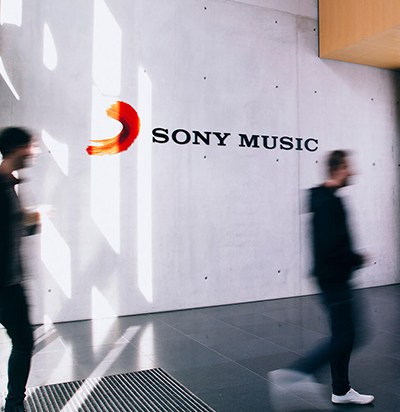Improved reporting efficiency increases time for strategy and creativity
Finding details and new insights for marketers with interactive data visualization
Improving project management flexibility and speed
Sony Music, one of the world's leading music companies, is radically changing its business with music streaming—and the volumes of data they’re collecting as a result. With so much data, Sony is moving beyond conventional tools to scale and improve analysis for better marketing optimization and efficiency.
Ryan Rauscher, Business Intelligence Manager at Sony Music in Germany, explains how Tableau significantly reduced the effort of creating reports despite growing data volumes, and how visual dashboards enable insights for revenue growth and more efficient marketing measures.
Improving reporting efficiency to increase time spent on strategy and creativity
Many international music superstars are under contract with Sony, and the company is responsible for marketing them. While the business of selling physical recordings is steadily losing importance, music streaming via the Internet is experiencing a meteoric rise.
“One of the most important questions we have to ask ourselves is, where does our money, the revenue in the streaming sector come from,” Rauscher said.
In order to answer this question, the company continuously analyzes a wealth of data from multiple disparate sources. "I would estimate that today we get three to five billion new data points per week from music streaming alone. In addition, there’s data from Shazam and YouTube. But there are also local data sources such as the official chart calculator for music charts in Germany, then radio air play, classic sales figures and chart positions," Rauscher said.
With the rapidly changing business models, channels and streaming services, all of this new data became a major challenge for Sony to understand, report on and make decisions with. In 2014, Sony introduced Tableau to help them solve these problems. By making self-service data visualizations available to colleagues around the world for daily reporting and decision-making, Sony found more time to be strategic and creative.



This is, I think, the most important advantage of Tableau: many colleagues can now concentrate on the creative interpretation of numbers instead of creating reports and dealing with the data themselves.
"We need tools that allow you to quickly try different things, change reports, interact with the data, try things out. That's why Tableau is definitely the right tool for us to handle this amount of data," Rauscher said.
After a modest start, Tableau adoption quickly established itself throughout the organization.Today, approximately 2,000 Sony Music employees use Tableau to aggregate and analyze a lot of data in real-time for monitoring and reporting. By centralizing the reporting, the company has found significant time savings for routine work, and has also improved the quality of their insights.
“Before the introduction of Tableau, we had about 30 colleagues in Germany alone, who downloaded figures every day, every week, and converted them back into Excel reports and reformatted them," recalls Rauscher.
“Today, they can save themselves this time because we take care of it centrally, and in this time [they can] devote themselves to analysis and content. This is, I think, the most important advantage of Tableau: many colleagues can now concentrate on the creative interpretation of numbers instead of creating reports and dealing with the data themselves,” Rauscher said.
We need tools that allow you to quickly try different things, change reports, interact with the data, try things out. That's why Tableau is definitely the right tool for us to handle this amount of data.
Finding details and new insights for marketers with interactive data visualization
In the past, reporting at Sony was limited to standard comprehensive performance indicators like sales, profits, chart positions or flat-rate download rates because the data and analysis lived in silos.
With Tableau, no matter where the data is coming from, or the complexity of the business, completely new areas of analysis can be explored with Tableau’s interactive data visualization tools. "We can provide data for all colleagues, and make data-based work and data-based decisions available to individual departments and labels", Rauscher said.
For example, an interactive dashboard not only allows Sony employees to monitor general sales development, but it also allows users to dig into the underlying details of their data to find insight into which department, and why the sales volume was generated, and ultimately improves future marketing decision-making with regard to streaming services.
“We see that with many great successful songs, for example, Spotify with its own playlists, sometimes generates more than half of the streaming and revenue. This is a very important insight for us, because we have to align our marketing accordingly."
It is crucial that we are able to provide data for all colleagues and that we are able to make data-based work and data-based decisions available to the individual departments and labels.
Improving Project Management Flexibility and Speed
Tableau has changed Sony Music's approach to project execution, giving the company greater responsiveness and flexibility in day-to-day operations. “We have moved away from traditional project management with a long lead time and towards agile work with strong prototyping," explains Rauscher. “All our documentation of the work is built around the Tableau infrastructure, dashboards and workbooks. We sort of re-structured ourselves around Tableau. This helps us to carry out and complete projects faster. I don't want to go back to the world before Tableau."

